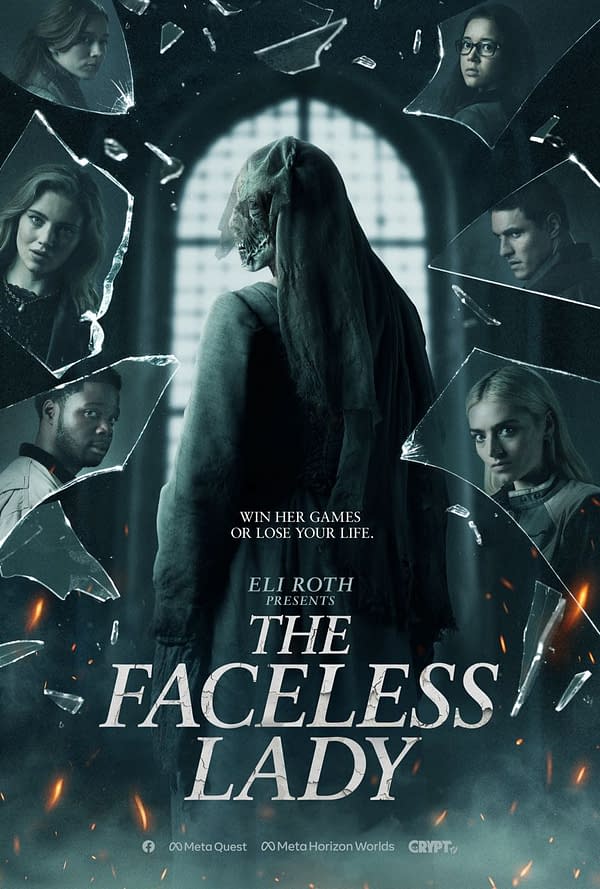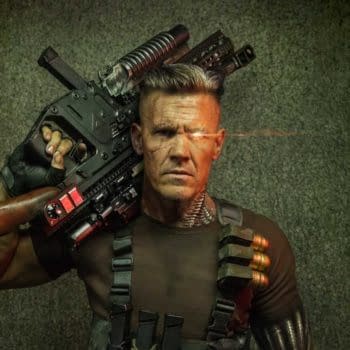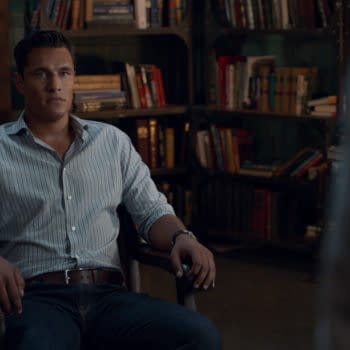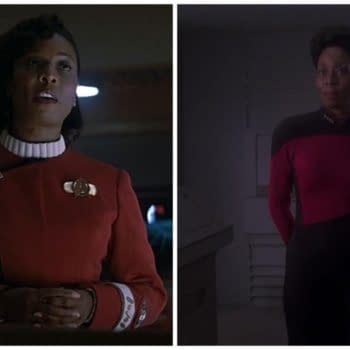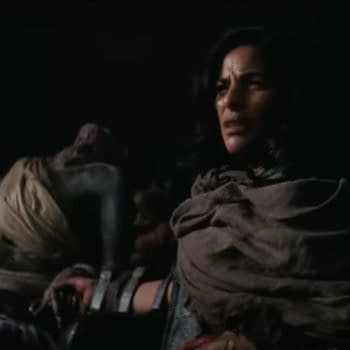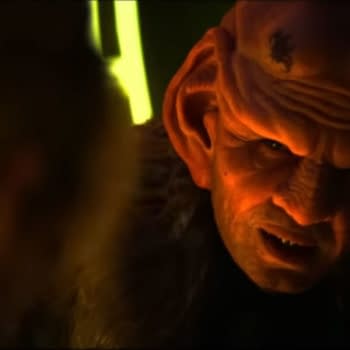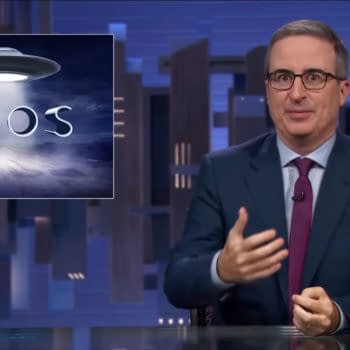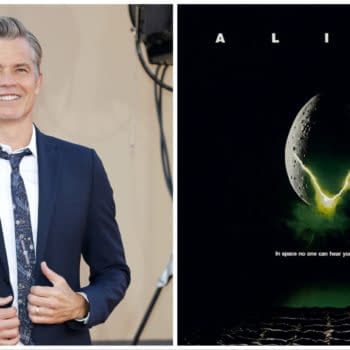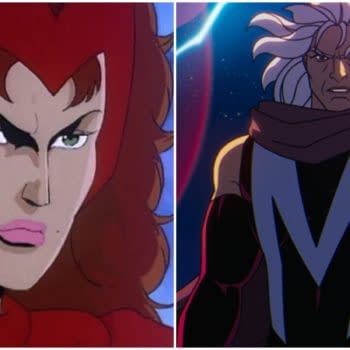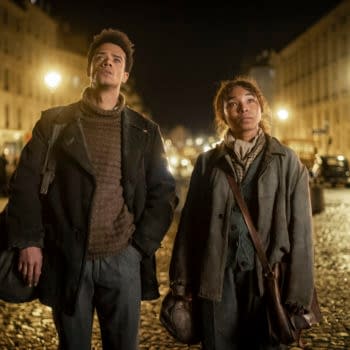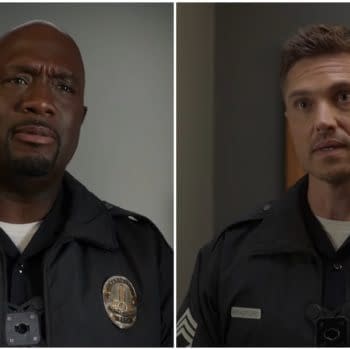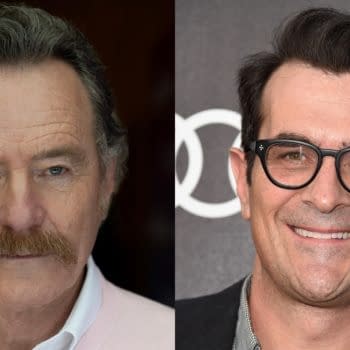Posted in: TV | Tagged: Borderlands, Crypt TV, eli roth, exclusive, interview, Meta Quest, thanksgiving, The Faceless Lady
The Faceless Lady EP Eli Roth on Evolving Horror to Meta's VR Platform
EP Eli Roth (Borderlands) spoke with Bleeding Cool about evolving horror to create Crypt TV and Meta's VR series The Faceless Lady.
You'll never see Eli Roth shy away from a bold opportunity for storytelling. Even as he's built an empire in the horror genre and is looking to expand into new franchises with the upcoming Lionsgate's Borderlands, the theatrical adaptation of the Gearbox videogames, and prepping the follow-up to his holiday slasher Thanksgiving for Sony, he's far from done creatively venturing more into virtual reality partnering with Crypt TV and Meta for The Faceless Lady as executive producer. From director John Ross and writer Jerome Velinksy, the six-episode series follows three couples who have been invited to a medieval castle in Ireland for a weekend competition where they will either win their games or lose their lives. Roth spoke with Bleeding Cool about how VR changed his life, how far along the technology has come, casting, and how he integrates the technology in his more traditional work like he did in Thanksgiving.

The Faceless Lady: Eli Roth's Ever-Expanding Journey into VR
When you're approached for 'The Faceless Lady, what was it about John and Jerome's vision coming to life that appealed to you?
Roth: I had a great experience working with Meta and Crypt TV, doing two previous shorts, one that I wrote and directed, 'Trick VR Treat.' The one that I wrote that Andrew McDonald directed, which was [Valentine's themed] called 'Be Mine.' It was exciting to push the boundaries of the format and see what was possible. I've been interested in trying to do something in VR with horror ever since I first saw it, and I shoot a lot of VR. I had a GoPro 360 in the first generation of ['Meta's] Oculus. In talking to Meta and seeing how those shows performed, the idea was, let's do another one, but let's try and serialize it so that it's done in six parts so you're not watching it in 20 minutes or a half hour and it's over.
At the same time, I was talking with Matt Celia at LightSail VR, and every time we try one of these, we always push the technology a little further and the format and say, "What can we get away with? How do we do camera moves that work?" Since in VR, if you do them wrong, you can get a little seasick. How do you do camera moves? How do you edit? How do you stage things? Each time you do it, we try new ideas. It was Darren Brandl and Jack Davis on Crypt TV; Jack heads out to John and Jerome, and these guys had a great pitch for something that could be done in multiple parts that would be a huge challenge to do in VR but an exciting one.
It was John's willingness to dive into technology and see its advantages as opposed to its limitations. What he did with Matt Celia at LightSail was the way they modified the RED Raptor camera in 3D, using these Canon dual fisheye lenses. We wanted to shoot 3D so badly on the other projects, but it's a longer post-production, so we didn't have time to do it. This time, you could do true stereoscopic 3D, but shooting with these RED cameras, the way they've modified them, the whole thing is sharp. It looks so beautiful in a way that I've never seen before.
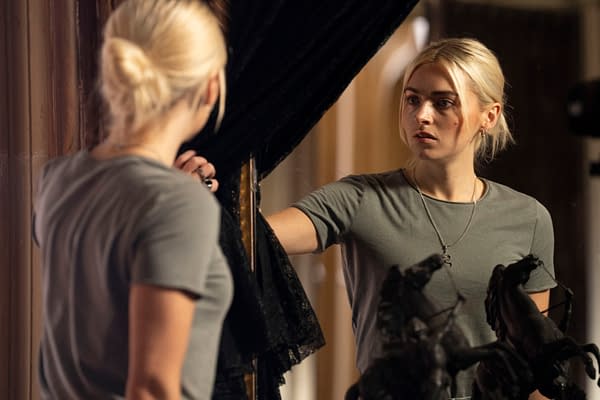
Does a series like 'The Faceless Lady' or your other VR projects leave room to be expanded, like sequels or perhaps jumping to other platforms beyond Meta?
I say, "Never say never." I loved working with Meta. As a company, they're growing and changing so fast that their specific needs change. When we did 'Trick VR Treat' and 'Be Mine,' they liked that one-time event programming. Now, they wanted people to come back repeatedly for it. They're all stories that I would love to continue, but there's no way to know what medium we would do them in. We must see what works best creatively, but when you're seeing this, I finally feel on 'The Faceless Lady' that the technology is there to achieve what I've been wanting to do from the start, which is immersive, scary storytelling where you're in the story as if you're one of the characters and you're watching it with them and next to them. It's like having a front-row seat in this incredible mix of a play and a movie. It's so immersive. I've never had an experience like that before. If it's successful and Meta wants to continue it, we would love to. They shot it in Ireland in this incredible location, and it feels like you've been there.
When it comes to the casting process, are you looking for talent who can be versatile in the VR realm?
With casting, you want great actors, but you want actors who are open to trying something new in a new medium. It is a mix of great stage and film acting in that you're not covering the scene the way you would if you were shooting a short film because you can put the actors in a way that you can look around, see it, and get everything you need from a master shot a lot of the time. Close-ups have a different effect in VR than they do when you're making a film traditionally. What we look for in a cast is, first and foremost, superb actors, and we got that. The cast is phenomenal. Everybody did such a great job, and you also want people that are open to doing things differently.
I met Staz [Nair] when he was in Brazil with 'Rebel Moon,' and I was in Brazil with 'Thanksgiving' at a Comic-Con; this was in early December. We were talking about him completely embracing a different way of doing a scene than you were if you were shooting a traditional movie. We look forward to as people who love it, embrace it, and want to go for it on all levels. Everyone in the crew did, from the photography, acting, and music to the editing of it. It's the production value, and It's unmatched. I've never seen anything like it.
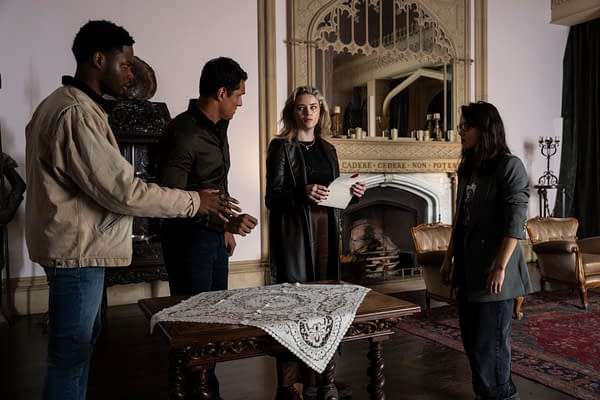
Has there been any specific concept in VR that introduced you to perhaps integrating it into one of your regular films?
I saw the Oculus Go when I was shooting my documentary 'Fin,' and it was the photographer, Joe Romeiro, when we were on a shark dive who shot some stuff with the GoPro 360 and put it in the headset, and it blew my mind. I thought, for the first time, you could capture what it's like to be in a place, so this was in 2018, and I took it with me everywhere. It was like at any time, I was traveling all over Europe. I would put it down on the table and record it to give myself ambiance. Anytime I wanted to go back to that restaurant, cafe, or that moment, I would put on the headset and see what it was like to absorb it.
As a writer, one of the great things about VR is when you're shooting those things, you can save those moments for later when you're writing. I saw some of the first horror things that were done, and I felt like the technology wasn't there. Every time the camera moved, I got a little motion sickness. How do we solve that? We find ways around that, and it's using a crane, a Steadicam, and all these tricks. That and the way you motivated there's it's a new medium where it's like we're in year one of the Lumière camera. What's exciting is finally seeing that the headsets are becoming widely available and seeing this type of storytelling you can do in six episodes. Each episode's 22 minutes; it keeps you on the edge of your seat, and you're looking left and right the whole time.
As soon as soon as you're done watching it, you want to watch it again. Every shot is breathtaking. You hear those stories of what it was like for those people watching a movie for the first time when the train came to the screen, and they all were fainting. This is that moment where you can see it at that resolution and feel like you're there and have that sensation. I've never experienced that before in VR, but it's finally there. That's Matt Celia and the incredible director of photography, as well as John and his understanding of how to embrace the medium and the way Jerome wrote it. They loved it and leaned into it, and that's why it works so well.
Are there goals in the future for your VR projects with Meta?
Look, I've had an amazing time working with Meta, and I'm talking to them about doing more things in the future, but the company is still finding its feet, and people are still discovering the world of VR and what can be done. My goal with them is to always give them exciting, groundbreaking projects that they can use to help tout this amazing technology and this amazing world they've built. Their needs change as a company, this works great, and if it's a huge hit for them, I'd love to continue telling stories in this format. It's so much fun and it's hard to describe unless you're in a headset. We wanted to make something that people will consider the benchmark and the best horror VR experience ever, and I think we've done it. I've seen everything that's been made, and nothing has come close to this, not on a technical, creative, or scary level. That's a credit to the cast, crew, and Meta for supporting it. If people respond the way I think they will, then we get to do more, but I love this technology and it's the very beginning. It's exciting and new, and I've always embraced new ways of storytelling, so I would love to continue to do it.
With projects that have been shot traditionally and in IMAX at the same time, do you see VR taking a similar step in that fashion?
I thought about, "How can you shoot traditional and VR at the same time?" Sometimes, the ideas are at odds with one another. It's like you're trying to film a play, television, and film at the same time. For 'Thanksgiving,' I shot behind-the-scenes VR, but I'd love to try and shoot more narrative VR when I shoot the sequel and that would be exciting for me to shoot traditional and VR at the same time. Part of the problem is it's 180 degrees. You see the world; you're looking all the way left and all the way right. That's what you see in VR. With a camera, you can get very specific and do a shot, but when you're with VR you're seeing the entire crew. Sometimes, the ideas fight one another, but whenever I stage a scene I'd say, "Okay, now we've shot that. What are we lit for, and what is there a VR version?" You might be kind of shortchanging yourself by doing both at the same time, but I think that certainly will have the component of the behind-the-scenes in VR so that people can feel what it's like to be on the set making that film. I shot a lot of VR behind the scenes of all my films. I always want to release the movie and then do a VR component so people can feel the experience.
The Faceless Lady, which stars Kathryn Wilder, James Farley, Staz Nair, Ned Dennehy, Daisy Jelley, Tara Lee, Ugo Onwuhalu, Mei Henri, and Sophie Jones, is available on Meta Quest with new episodes available on Thursdays. You can check out our interview with Lee here.


